Research Area D - Publications 2007
17-Dec-2007
Nucleic Acids Research, online article
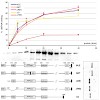
Loss of function of the RNA helicase maleless (MLE) in Drosophila melanogaster leads to male-specific lethality due to a failure of X chromosome dosage compensation. MLE is presumably involved in incorporating the non-coding roX RNA into the dosage compensation complex (DCC), which is an essential but poorly understood requirement for faithful targeting of the ...
14-Dec-2007
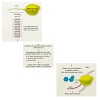
Patters of phosphorylation in a region of RNA polymerase II may constitute a code that controls the recruitment of regulatory factors to control gene expression. Jeffry L. Corden puts CIPSM-researcher Dirk Eick's recent work on transcription in perspective. The development of higher forms of life would appear to have been influenced by RNA polymerase II. This ...
14-Dec-2007
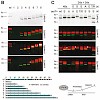
RNA polymerase II is distinguished by its large carboxyl-terminal repeat domain (CTD), composed of repeats of the consensus heptapeptide Tyr1-Ser2-Pro3-Thr4-Ser5-Pro6-Ser7. Differential phosphorylation of serine-2 and serine-5 at the 5′ and 3′ regions of genes appears to coordinate the localization of transcription and RNA processing factors to the elongating ...
14-Dec-2007
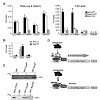
RNA polymerase II (Pol II) transcribes genes that encode proteins and noncoding small nuclear RNAs (snRNAs). The carboxyl-terminal repeat domain (CTD) of the largest subunit of mammalian RNA Pol II, comprising tandem repeats of the heptapeptide consensus Tyr1-Ser2-Pro3-Thr4-Ser5-Pro6-Ser7, is required for expression of both gene types. We show that mutation of ...
10-Dec-2007
Nucleic Acids Research, online article
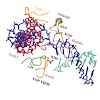
The active center clefts of RNA polymerase (RNAP) from the archaeon Pyrococcus furiosus (Pfu) and of yeast RNAP II are nearly identical, including four protruding loops, the lid, rudder, fork 1 and fork 2. Here we present a structure–function analysis of recombinant Pfu RNAP variants lacking these cleft loops, and analyze the function of each loop at different ...
07-Dec-2007
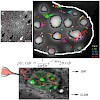
Genome activity and nuclear metabolism clearly depend on accessibility, but it is not known whether and to what extent nuclear structures limit the mobility and access of individual molecules. We used fluorescently labeled streptavidin with a nuclear localization signal as an average-sized, inert protein to probe the nuclear environment. The protein was injected ...
11-Nov-2007
www.nature.com/nsmb, online article
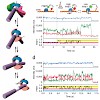
The general transcription factors (GTFs) of eukaryotic RNA polymerase II, in a process facilitated by regulatory and accessory factors, target promoters through synergistic interactions with core elements. The specific binding of the TATA box–binding protein (TBP) to the TATA box has led to the assumption that GTFs recognize promoters directly, producing a ...
09-Nov-2007
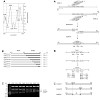
Site-directed mutagenesis (SDM) of target DNA is an invaluable tool to study protein structure–function relationships. Alanine-scanning mutagenesis has been successfully applied to systematically map functional binding epitopes. Substitution of target amino acids with alanine removes all side chain atoms past the b-carbon and does not introduce unusual backbone ...
03-Nov-2007
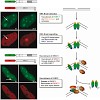
Genome integrity is constantly threatened by DNA lesions arisin from numerous exogenous and endogenous sources. Survival depends on immediate recognition of these lesions and rapid recruitment of repair factors. Using laser microirradiation and live cell microscopy we found that the DNA-damage dependent poly(ADP-ribose) polymerases (PARP) PARP-1 and PARP-2 are ...
21-Oct-2007
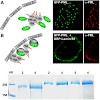
Green fluorescent proteins (GFPs) and variants thereof are widely used to study protein localization and dynamics. We engineered a specific binder for fluorescent proteins based on a 13-kDa GFP binding fragment derived from a llama single chain antibody. This GFP-binding protein (GBP) can easily be produced in bacteria and coupled to a monovalent matrix. The GBP ...
18-Sep-2007
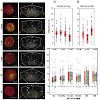
Dynamic gene repositioning has emerged as an additional level of epigenetic gene regulation. An early example was the report of a transient, spatial convergence (<2 micro m) of oppositely imprinted regions (‘‘kissing’’), including the Angelman syndrome/Prader– Willi syndrome (AS/PWS) locus and the Beckwith–Wiedemann syndrome locus in human lymphocytes during late ...










